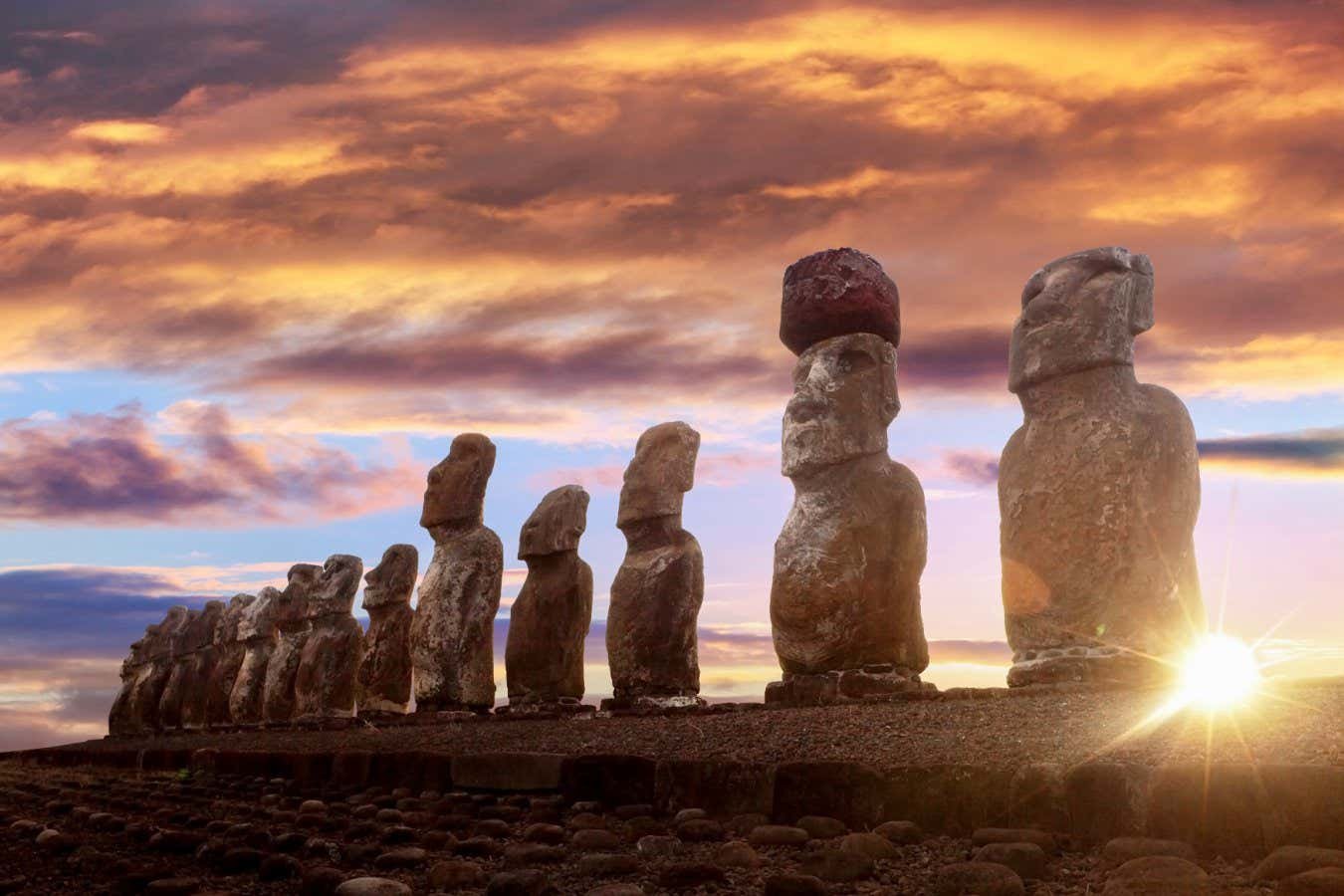
Easter Island’s famous moai statues
Tero Hakala/Shutterstock
DNA analysis of ancient remains from Easter Island shows that the population was in fact increasing when Europeans arrived, rather than collapsing as reported by some historical accounts.
The results also show that there were interactions between the residents of the island and those of South America long before the arrival of Europeans. Both the island and its people are also known as Rapa Nui.
Located in the Pacific Ocean 3500 kilometres from South America, Rapa Nui is one of the most remote inhabited islands on Earth. Polynesian people began settling there around AD 1200, when its 164 square kilometres were covered in palm forests.
By the time Europeans arrived in 1722, the vegetation had been largely destroyed by a combination of rats and overharvesting. The history of the island has often been portrayed as an example of unsustainable ecological exploitation and population growth followed by collapse.
In the latest study, J. Víctor Moreno-Mayar at the University of Copenhagen, Denmark, and his colleagues looked at 15 sets of human remains kept at the National Museum of Natural History in Paris, France, collected by expeditions in 1877 and 1935.
The researchers worked closely with representatives of the Rapa Nui community. One of their aims was to confirm that the individuals at the museum were, in fact, from the island, as there is an effort being led by modern residents to repatriate the remains.
The results show that the 15 people, who all died over the past 500 years, did originate on Rapa Nui.
A population undergoing a bottleneck from a collapse in numbers will have signals in their DNA showing a drop in genetic diversity, says Moreno-Mayer.
“We are using statistical methods that can reconstruct the genetic diversity in the Rapa Nui population throughout the last few thousand years,” he says. “And interestingly enough, we do not find any evidence of a dramatic population decline around 1600s as expected from the collapse theory.”
Instead, the results suggest that the Rapa Nui population increased steadily until the 1860s, when slave traders kidnapped hundreds of islanders and a smallpox outbreak killed many more.
The study also identified stretches of DNA in the ancient Rapa Nui genomes that have an Indigenous American origin. Their analysis suggests that the mixing of these populations occurred around the 1300s.
“Our interpretation is that the ancestors of Rapa Nui first peopled the island and shortly after made a return journey to the Americas,” says Moreno-Mayer.
Previous studies have also cast doubt on the story of a population collapse. Carl Lipo at Binghamton University in New York says it was “terrific” to learn that a completely independent line of evidence points to the same conclusions his team reached in a paper published earlier this year, using radiocarbon and archaeological evidence.
He says the study confirms that the island was populated with people who lived resiliently and successfully until the arrival of Europeans.
Topics:

